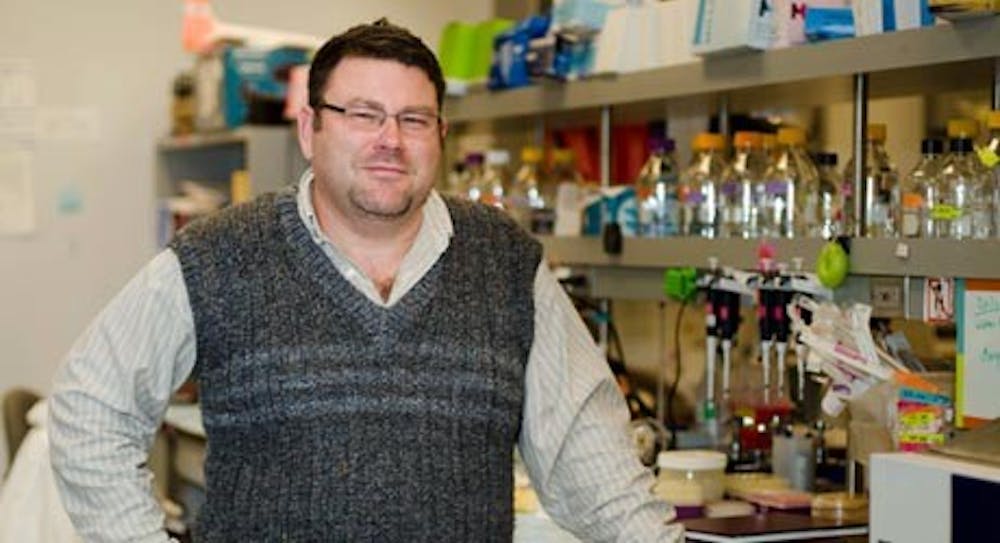Tobacco has been linked to all kinds of diseases, but a team of ASU researchers has found that it could save thousands of lives.
Molecular biology professor Tsafrir Mor and his team of ASU professors and students are working to modify tobacco plants to produce proteins that combat nerve gases.
Mor and 19 other scientists published a paper on their research in the Nov. 23 issue of the weekly journal Proceedings of the National Academy of Science.
“The proteins act as sponges to mop up nerve agents,” Mor said, adding that the research will help protect military personnel before exposure to nerve gases.
David Lenz, research chemist for the U.S. Army Medical Research Institute of Chemical Defense, approached ASU in 2006 with grant money to develop an effective defense against nerve agents.
“The army has an interest in proteins that would protect against exposure to chemical warfare threats,” he said.
The army’s current treatments save lives, Lenz said, but they are designed as therapy for those already exposed to nerve agents. The army wants to find methods that would protect people from being exposed in the first place.
In 1995, the religious group Aum Shinrikyo released the deadly liquid nerve agent Sarin in Japan’s subway system. The attack killed 13 and severely injured 50 others.
A nerve agent attack is a very real possibility, Mor said, citing the incident in Japan as an example.
“It’s not very sophisticated chemistry, making nerve agents,” he said.
“Bioscavengers,” as the proteins are called because they destroy toxins in the body, perform a vital function in the brain.
The brain sends the neurotransmitter acetylcholine across synapses to trigger muscle movement.
After the transmitter does its job, Mor said, it is broken down by the bioscavenging enzyme acetylcholinesterase, known as AChE.
Nerve agents, usually aerosol sprays at room temperature, work by blocking AChE in the brain. When this happens, too many transmitters are sent to the muscles, causing severe muscle spasms.
“If it affects the muscles that control the lungs, you can die of asphyxiation,” Mor said.
Mor’s work with bioscavenging enzymes began in 1998 while doing post-doctoral research at Cornell University.
He has worked primarily with the bioscavengers AChE and butyrylcholinesterase, known as BChE.
Both enzymes function similarly to break down proteins and toxins in the body. AChE is found only in the brain, while BChE is contained in the blood stream, Mor said.
Mor and his researchers found that modified tobacco plants could synthetically produce BChE in large quantities and at similar rates of effectiveness to its natural counterpart.
The BChE produced by the tobacco plants, when added to the bloodstream, acts as a supplement, adding to the limited supply already in the body and protecting the subject for several days.
Scientists have not used BChE as a nerve agent combatant on a large scale because sufficient amounts cannot be harvested from human blood. There simply isn’t enough of it, Mor said.
Modified plants, however, can be replicated on a massive scale.
“Plants are great factories for proteins, and you can always just grow more plants,” Mor said.
Using a preventive measure is important because nerve agents are very fast acting once they reach the brain, and the window of opportunity to treat a person is very small after they are exposed.
“The idea is that before any of these bad things can reach the brain, they have to go through the bloodstream,” Mor said.
BChE can also be used to wean addicts off cocaine, because it breaks down the drug and prevents users from receiving highs.
“It could be a very useful tool in fighting addiction,” he said.
Molecular biology senior Neil Robbins, one of the co-authors of the paper, works in several capacities of the research.
Interested in pursuing graduate work in infectious diseases, Robbins said he enjoys lab research.
“My time at ASU has made me really interested in protecting people,” he said. “I like to feel that my research can help people in some fashion.”
Mor and his fellow researchers at ASU are still working on their bioscavenger research, trying to find even more effective protection against nerve agents.
He plans to publish more papers on the research at ASU, and the University is working diligently to solidify its place as a leader in the field.
“There aren’t many other places that have the capacity to do what we’re doing here at ASU,” Mor said.
Reach the reporter at alex.ferri@asu.edu





